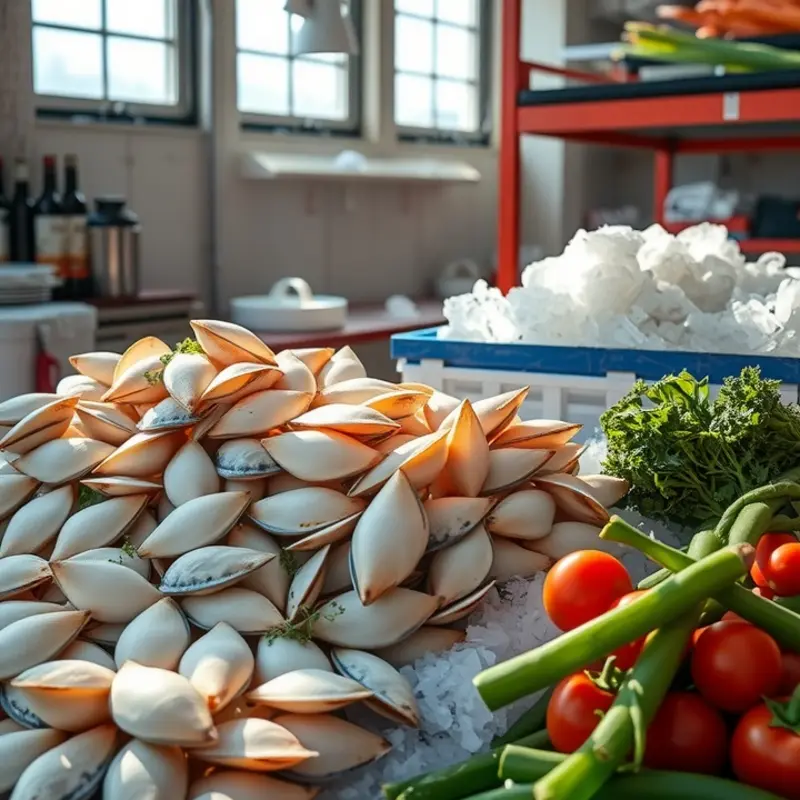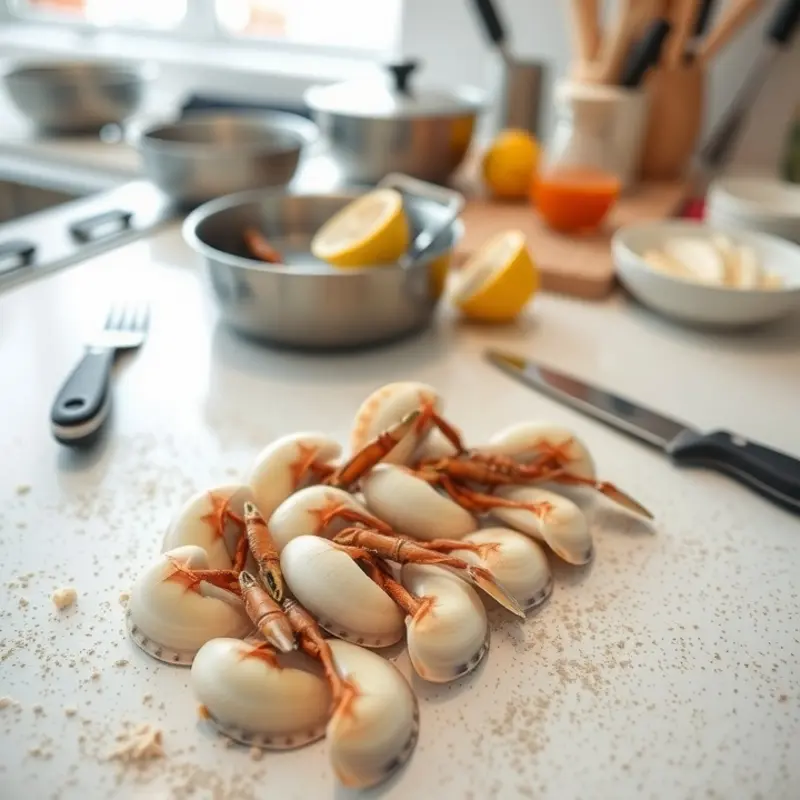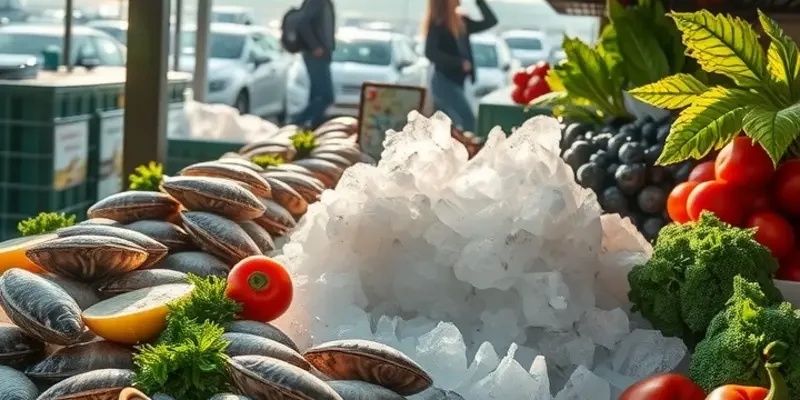Cooking shellfish can be a rewarding culinary adventure, but it requires careful handling to ensure safety and maximize flavor. Whether you’re preparing shrimp, scallops, or clams, understanding safe practices is essential. This guide will provide you with practical tips, from selecting fresh shellfish to cooking them properly, ensuring that every dish you create is both delicious and safe to eat.
Choosing Fresh Shellfish: Key Factors

Selecting fresh shellfish is essential not only for safety but also for maximizing flavor in your dishes. When shopping, it’s crucial to be able to identify the characteristics of high-quality shellfish, ensuring that each meal is both delectable and safe.
Start by examining the shellfish with your senses. Fresh shellfish should smell like the sea—clean and slightly briny. Avoid any shellfish with an overly fishy or ammonia-like odor, as this can indicate spoilage. The shells of mollusks like clams, mussels, and oysters should be tightly closed or close when lightly tapped—a sign they are still alive and fresh.
For crustaceans such as shrimp, lobster, and crab, the shell should appear shiny and firm. The flesh underneath should be resilient when pressed, and a muted white or slightly greyish color is a positive sign. Avoid shellfish with dry or discolored flesh, as these are key indicators of age.
When it comes to bivalves, avoid any with cracked or damaged shells. Ensure that you only choose shellfish from reliable suppliers who adhere to the safety guidelines and regularly check for any contamination or red tide alerts.
The role of sustainability cannot be overlooked. Choosing shellfish that is responsibly sourced helps protect the ocean’s ecosystems for future generations. Look for certification or labels that indicate sustainable fishing practices. Sourcing locally can also reduce the carbon footprint associated with transportation, providing fresher options and supporting regional fisheries.
If you want a deeper understanding of how to handle your shellfish safely once you’ve selected it, consider reading about eco-smart kitchen storage which provides insights on maintaining both quality and safety in food storage as part of your sustainable kitchen practices.
Overall, buying fresh shellfish from a trustworthy source and checking for certifications of sustainability ensures both safety and quality. Happy cooking!
Safe Preparation and Cooking Techniques

Preparing and cooking shellfish can be a culinary delight or a safety disaster, depending on your approach. Proper handling is crucial to maintain both taste and safety. Begin with the first crucial step: washing. Before cooking, rinse shellfish under cold running water to remove surface grit and impurities. For mussels and clams, focus on removing beards and debris. Use a firm brush to scrub the shells, ensuring all sand is dislodged.
Next, prioritize handling techniques. Always ensure shellfish are kept cold, ideally between 32°F and 38°F, until you’re ready to cook. Use separate cutting boards and utensils for shellfish and other ingredients, reducing the risk of cross-contamination. If using frozen shellfish, thaw them in the refrigerator or under running cold water, never at room temperature.
Understanding cooking temperatures is critical. All shellfish should reach an internal temperature of 145°F to be safe for consumption. This temperature ensures harmful pathogens are neutralized. For more detailed guidance on temperature management, you might find this guide on speedy seafood preparation helpful.
Determining when shellfish are cooked is equally important. Look for visual cues: clams, mussels, and oysters should open their shells. Discard any that remain closed, as they are not safe to eat. Shrimp should appear opaque and have a pinkish hue, while scallops should turn milky white or pale opaque.
When serving, presentation is key. Serve over a bed of ice with lemon wedges for a classic touch or with a vibrant herb garnish for an aesthetic flair. Keep them chilled until serving if presenting shellfish cold. For hot dishes, serve immediately to maintain optimal texture and taste.
By following these steps, you can enjoy delicious shellfish while ensuring the highest safety standards, making every meal a memorable one.
Final words
Cooking shellfish safely elevates the experience of enjoying seafood dishes at home. By choosing fresh ingredients and mastering safe preparation and cooking methods, you not only enhance the flavor of your meals but also protect the health of those you serve. With these practices in your culinary toolkit, you’ll be well on your way to creating delicious, safe shellfish dishes that impress family and friends alike.







